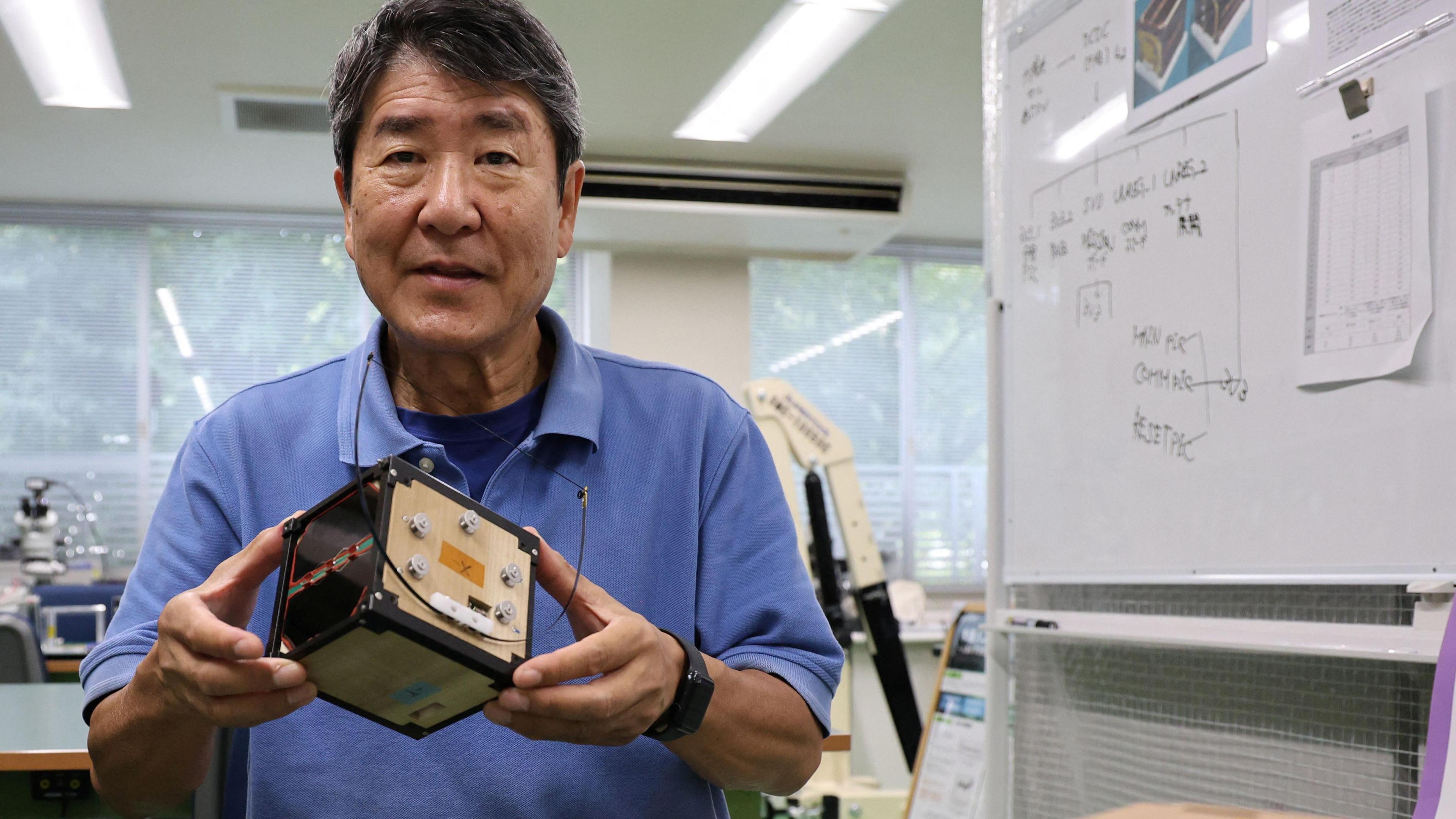Tiny wooden satellite launched into space

The tiny wood-panelled, solar-powered satellite will orbit Earth for six months
- Published
We are used to seeing large, white, metal objects being launched into space but this satellite is a first of its kind.
A tiny box-shaped satellite (a word used to describe something that orbits a planet or a star), called LingoSat, which is made partly of wood, was launched up to the International Space Station on 5 November.
It will then be released to orbit the Earth for six months.
LignoSat is made of wood from honoki, a kind of magnolia tree found in Japan, and has been made using a traditional Japanese technique without screws or glue.
The research team hope to test how wood can be used in space exploration projects in the future.
Takao Doi, who is an astronaut and also studies human space activities at Kyoto University, said using renewable materials could allow humans to "build houses, live and work in space forever".
Planet's moon may have an ocean under its surface
- Published1 November 2024
Primary school pupils speak to astronaut living on the ISS
- Published24 October 2024
Space fan? Take our Mega Space Quiz
- Published13 February 2023
Why is wood a good material for houses in space?

It has been called LignoSat, after the Latin word for wood, lignum
Researchers say wood will last longer in space than it does on Earth because there is no water, or oxygen, to rot it or enable it to burn.
The satellite has sensors to monitor how its wood reacts to being in the extreme environment of space.
The researchers at Kyoto University say using wood for space projects could also be much less polluting than metal, when they burn-up on re-entry at the end of their life.
